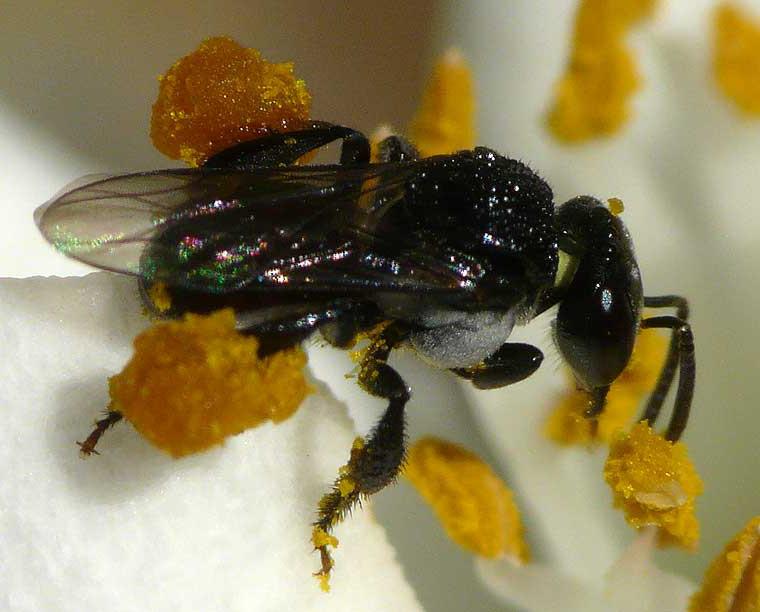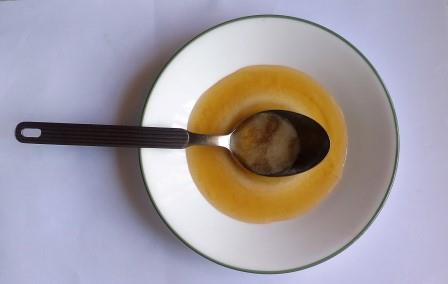
Honey of the stingless bees is a sweet, viscous food substance produced by stingless bees from floral nectar. It is quite similar to honey from the common honey bees (genus Apis) in most aspects but with its own distinctive physicochemical profiles, minerals and bioactive compounds.
There are more than 500 species of stingless bees worldwide. They can be found in most tropical or subtropical regions of the world, such as Australia, Africa, Southeast Asia and tropical America. Malaysia has its share of 33 species.
Stingless bees are closely related to the common honey bees (genus Apis) as both belong to the same Apidae family. However stingless bees are categorized under the Meliponini tribe while the common honey bees (genus Apis) are from Apini. Even though they cannot sting as their name suggests, these bees are able to protect their colonies by using their strong mandibles to grip their intruders.
Stingless bees are efficient pollinators and until recently are mainly used for such purposes, though the Mayans of Central America had been known to be using their honey for medical purposes a long time ago. Stingless bees honey is now gaining popularity and more and more people are rearing stingless bees for their honey, including Malaysia. For Malaysia this phenomenon only began around 2012.
Two Recommended Species of Malaysia
Out of the 33 Malaysian species identified so far, two that stand out more are Heterotrigona Itama and Geniotrigona Thoracica. These two have been recommended and promoted by the Malaysian Agricultural Development Institute (MARDI) as more suitable for meliponiculture – the propagation and culturing of the stingless bees for their honey. These two species are known for their high honey production, more tolerance to diseases and parasites as well as for their ease of keeping. Stingless bees of Itama species can produce 0.5 – 1.5 kg of honey per hive per month, while the Thoracica species twice as much.

By-products of Stingless Bees
Besides honey as their primary products, stingless bees also produce bee bread and propolis as secondary by-products. Bee bread is an extremely nourishing food derived from pollen and serves as the main source of protein for stingless bees and their larvae. The propolis on the other hand is produced by stingless bees from resin of trees collected by their worker bees. Propolis acts as the main building block for their hives. This includes pots for storage of honey and bee pollen as well as chambers for the queen and her brood. Studies done have shown that propolis displays antioxidant and antimicrobial properties and so has useful medicinal benefits.
Color of Stingless Bees Honey
Honeys of stingless bees originate from floral nectar with light golden color as almost always the norm. However they can exhibit any color from light brown to dark brown or almost black depending on a combination of factors. Among the factors are stingless bee species, the predominant flowers visited and stage of fermentation of the honey among others. Fermentation of stingless bee honey occurs naturally while still in the pots and continues post harvest, changing the tone of its color slightly darker in the process.
Physicochemical Composition of Stingless Bees Honey
Stingless bees honey has higher water content than honey of the Apis bees. It is less sweet and contains less sugar. It has more antioxidant, antimicrobial, anti-inflammatory as well as moisturizing properties than honey of the Apis bees. Stingless bees honey also contains minerals such as potassium, calcium, sodium, magnesium as well as manganese
Why Stingless Bees Honey?
Stingless bee honey is generally more palatable because it is not overly sweet or thick and is nutritious. It is also believed to have medicinal properties more than honey of the Apis bees.
Interest as well as studies done on stingless bee honey is still quite new and there lies potential for more benefits still unknown to us today to be discovered. It is comforting to know that people are opening up to accept stingless bee honey as a worthy or even superior competitor to the Apis bee honey. The Mayans were correct in pioneering its uses long time ago and they might have just helped us found the food that could well become our new superfood for today.
About the guest contributor:
Mr Rozi Daud is a stingless bee farmer in Kuala Terenganu, Malaysia. He also provides training for those who are interested to be a stingless beekeeper or apiarist. Please contact us at 6016 3220 952 for assessment of suitability of your location for stingless bee farming.